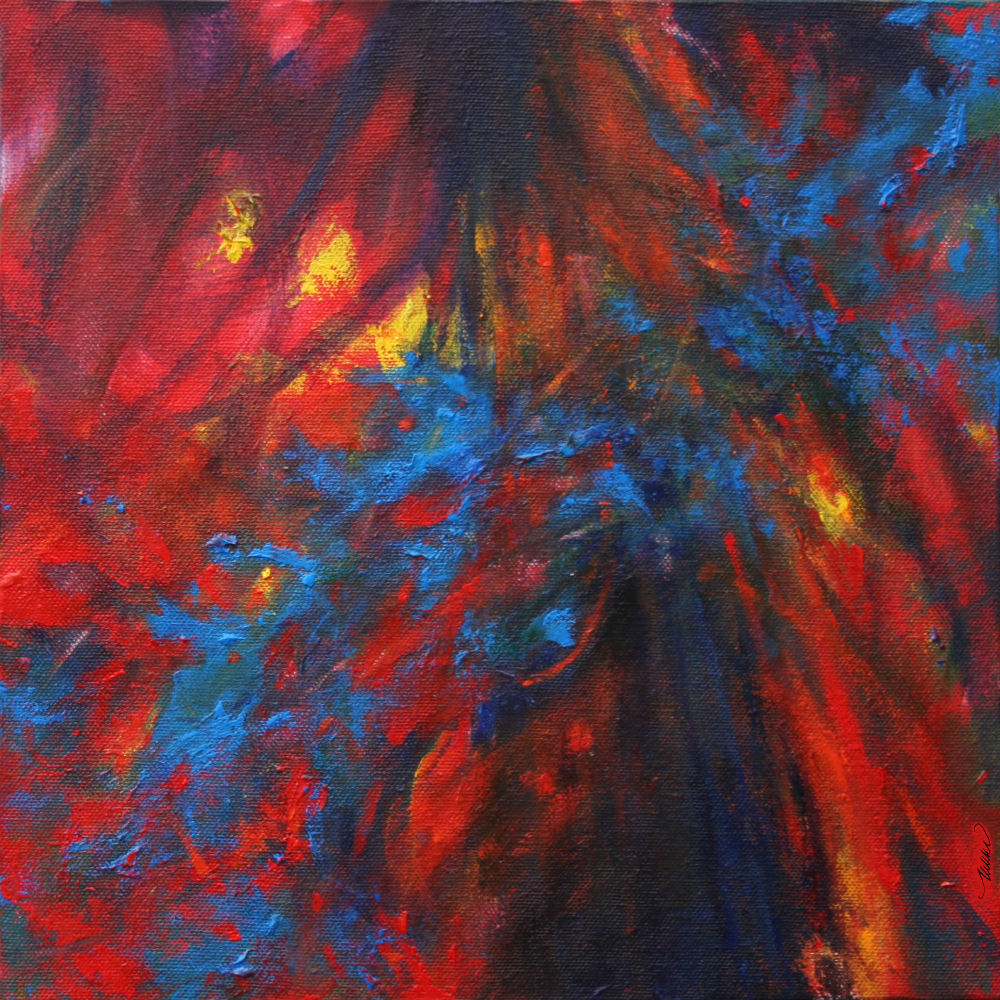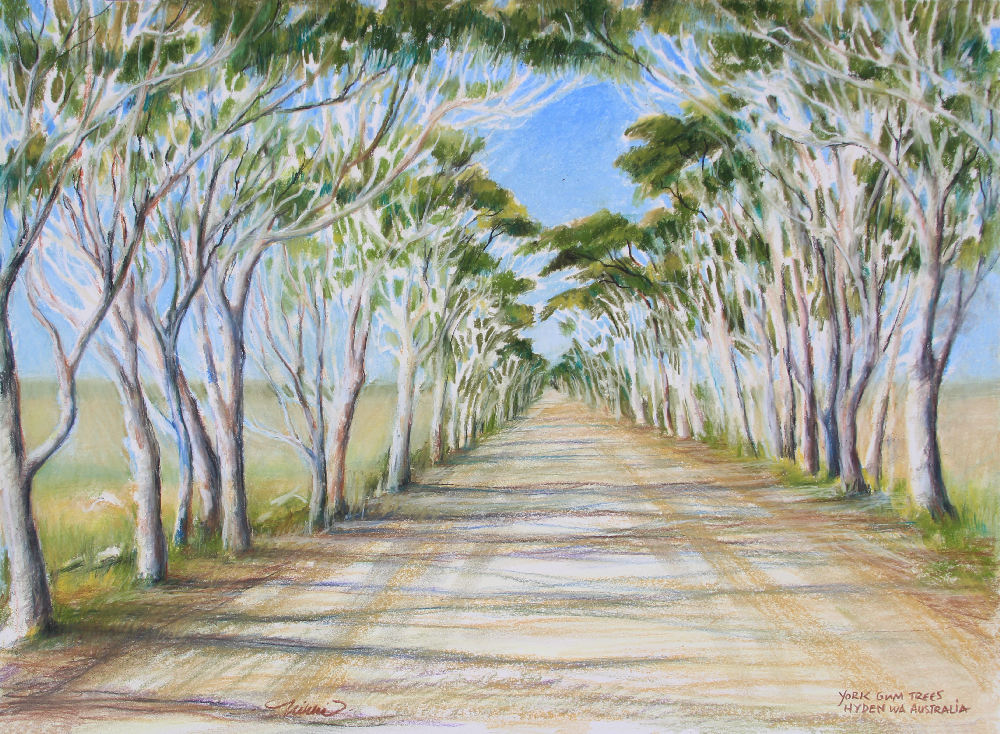Environmental issues
« Previous EntriesLeaves and Petals
Saturday, October 5th, 2024
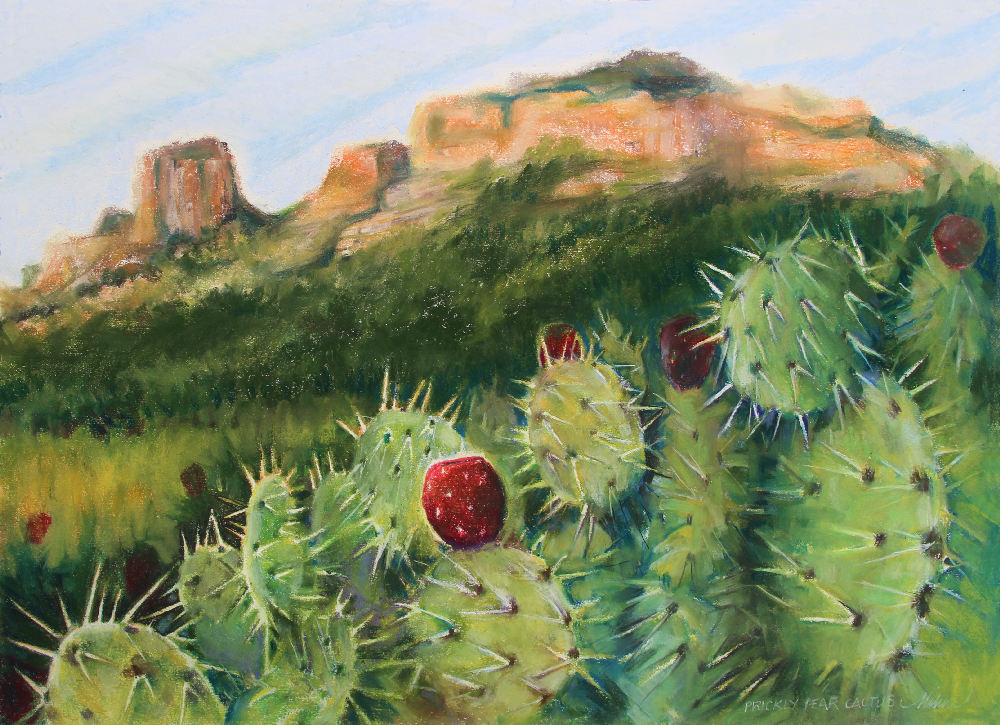
Prickly Pear Cactus (Sedona, AZ), 18H x 24W inches soft pastels on paper – 27H x 33W” framed, won Honorable Mention in Fusion Art’s 10th Annual Leaves and Petals Exhibition and competition.
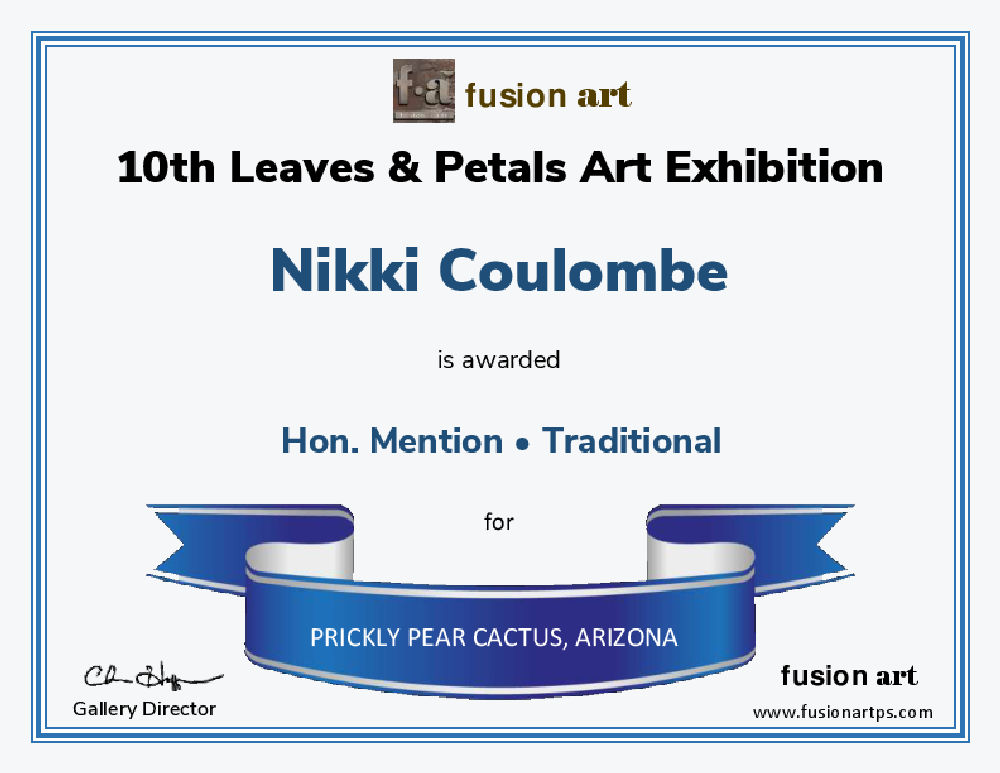 Prickly Pear Cactus is native to the Americas including Mexico, an important food source for desert animals and for humans, but now threatened to extinction by a cactus moth that has no known natural predators in the US. In 2021, a wasp was exported from South America to Texas to help control the spread of moth devastation, with some success.
Prickly Pear Cactus is native to the Americas including Mexico, an important food source for desert animals and for humans, but now threatened to extinction by a cactus moth that has no known natural predators in the US. In 2021, a wasp was exported from South America to Texas to help control the spread of moth devastation, with some success.
Butterfly Bush
Wednesday, June 12th, 2024
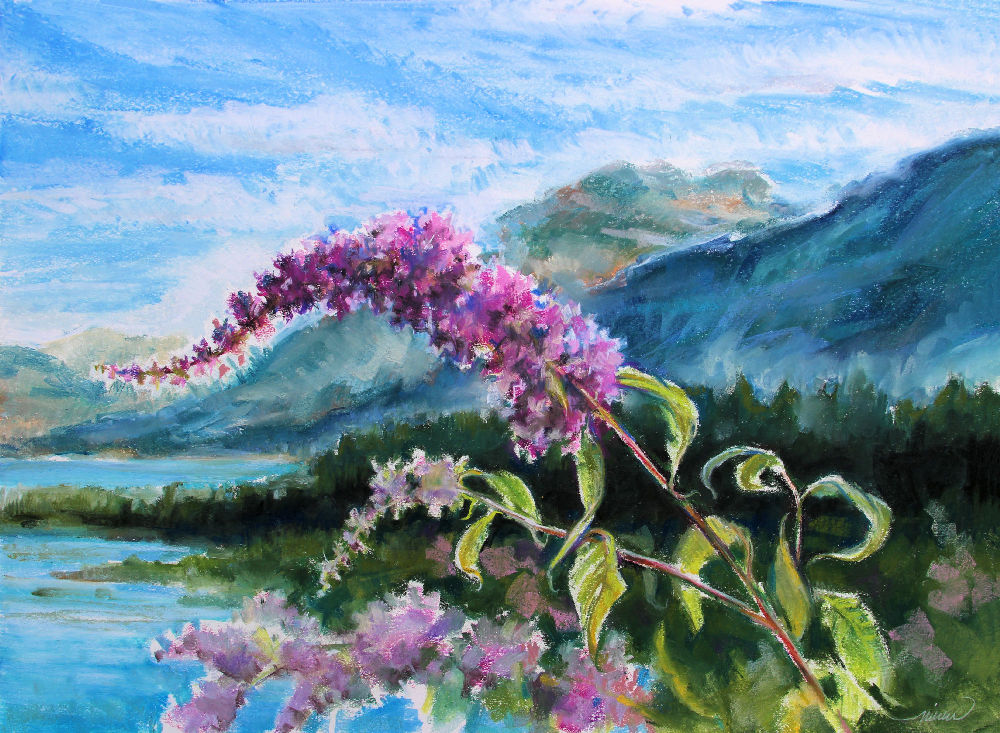
![]() Showing in Exhibizone’s True Beauty June 12-Aug. 12th, 2024
Showing in Exhibizone’s True Beauty June 12-Aug. 12th, 2024
Butterfly Bush – Buddleja davidii, Lake Wakatipu, Queenstown New Zealand – 18H x 24W inches soft pastels on paper. Beautiful invasion: Native to central China and an ornamental in North American gardens, the Butterfly Bush is viewed as invasive in many countries across the world. Originally drawn and posted April 7th, 2024.
Exhibition: Emptiness
Friday, December 16th, 2022
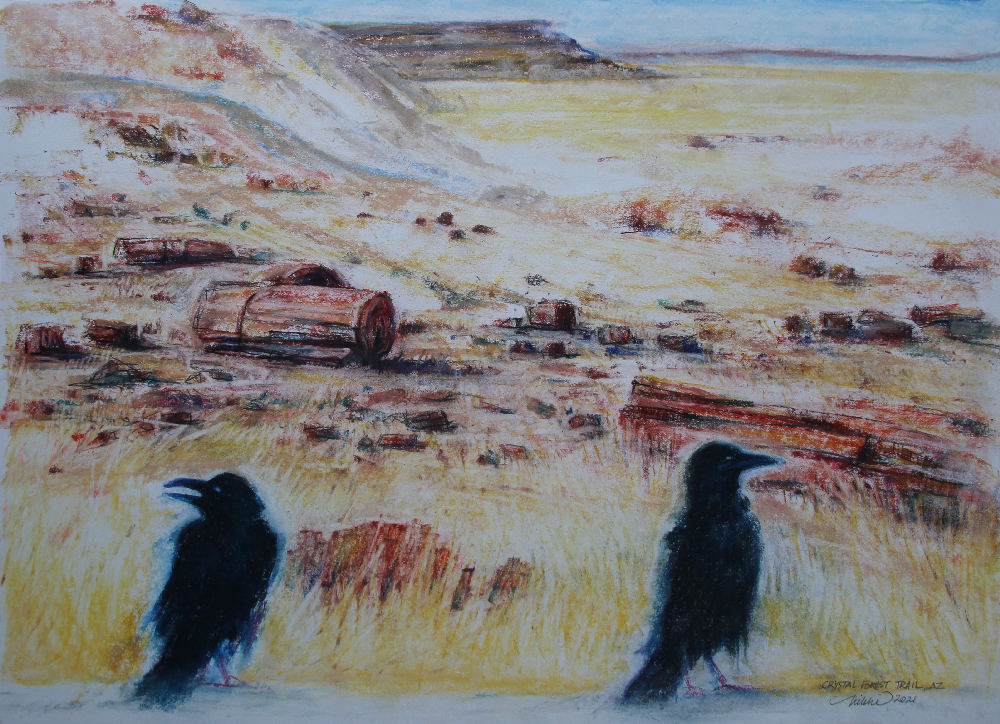
![]() Showing online Dec. 15 – Jan. 15, 2023, Exhibizone’s “Emptiness” – Petrified Forest – Crystal Forest Trail, AZ – 18H x 24W inches soft pastels on paper. White frame with crackle finish, total size 27H x 33W inches.
Showing online Dec. 15 – Jan. 15, 2023, Exhibizone’s “Emptiness” – Petrified Forest – Crystal Forest Trail, AZ – 18H x 24W inches soft pastels on paper. White frame with crackle finish, total size 27H x 33W inches.
This piece also won a merit award in Contemporary Art Room’s exhibition, “Trees and Fields”, showing online in December, 2021.
Douglas Fir
Saturday, July 30th, 2022
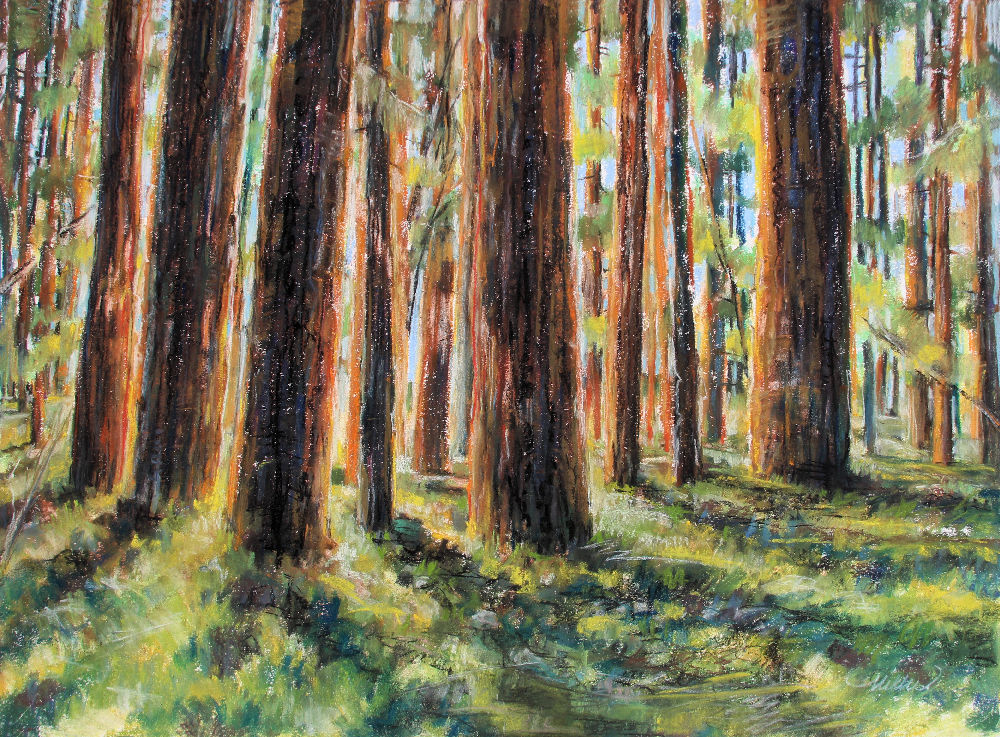
Douglas Fir, Salt Spring Island, BC – 18H x 24W inches soft pastels on paper
“The Coastal Douglas-fir (CDF) zone describes a unique set of ecosystems found only on southeast Vancouver Island, the islands of the Salish Sea, and the southwest coast of BC. CDF ecosystems are rare and highly endangered. These ecosystems include Douglas-fir forests, as well as Garry oak woodlands, wetlands, estuaries, and other unique communities of plant, animal, and fungi found nowhere else in the world.” Read more on the Islands Trust website
Wild Mustard
Friday, May 27th, 2022
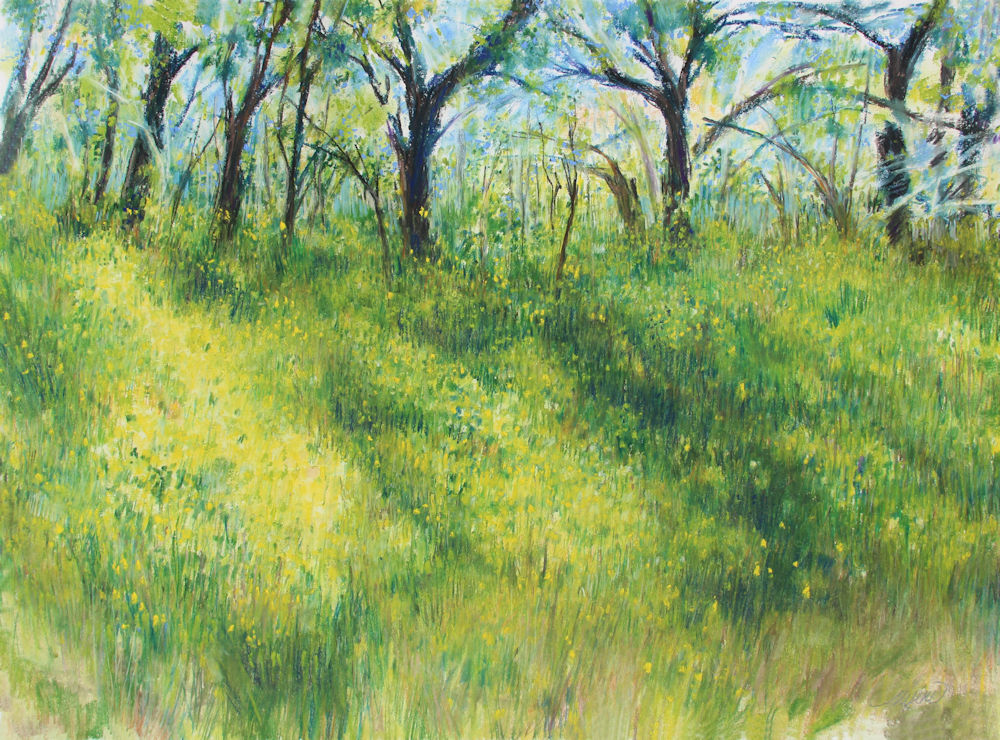
Wild Mustard, Coppell TX, 18H x 24W inches soft pastels on paper. Like most invasive species, beautiful flowering en masse. That and being edible are two of many reasons it has been able to flourish, robbing resources and space usually occupied by Texas Bluebonnets and other native plants now said to be in danger because of it.
Fire in The Gorge
Monday, May 2nd, 2022
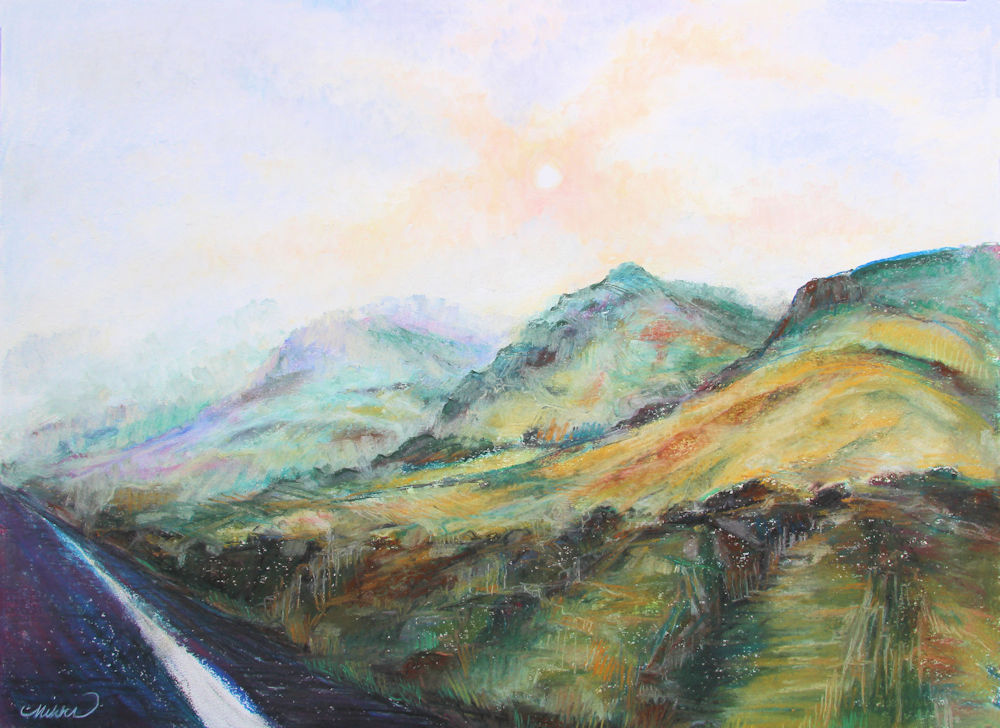
Fire In The Gorge, 18H x 24W inches soft pastels on paper, framed size 27H x 33W”.
Known as the Eagle Creek Fire, on Sept 2, 2017 a wildfire lit by a 15 year old destroyed 50,000 acres in the Columbia River Gorge, mostly in Oregon with some fires in WA. The fire burned for three months and Hwy 84, a historic route into and out of Portland, was shut down for much of that time, forcing travelers, including me on my way to Alberta, to take side-routes. That year there were forest fires in the mountains all along the drive north, and a border patrol officer commented, “You have ashes all over your car”.
Camel
Saturday, April 30th, 2022
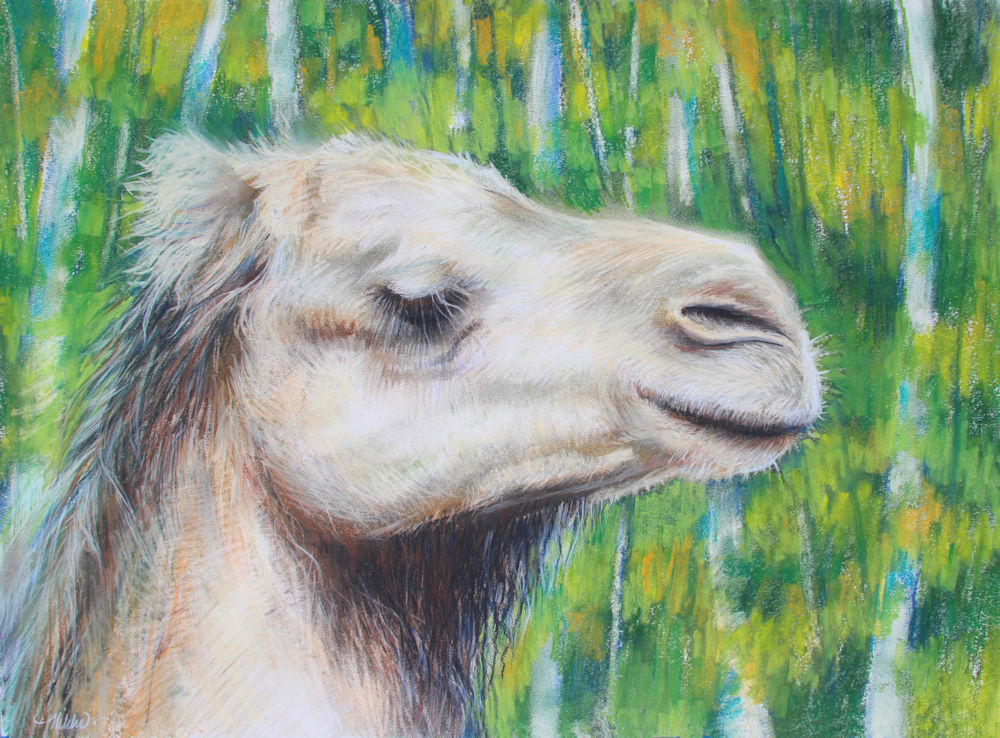
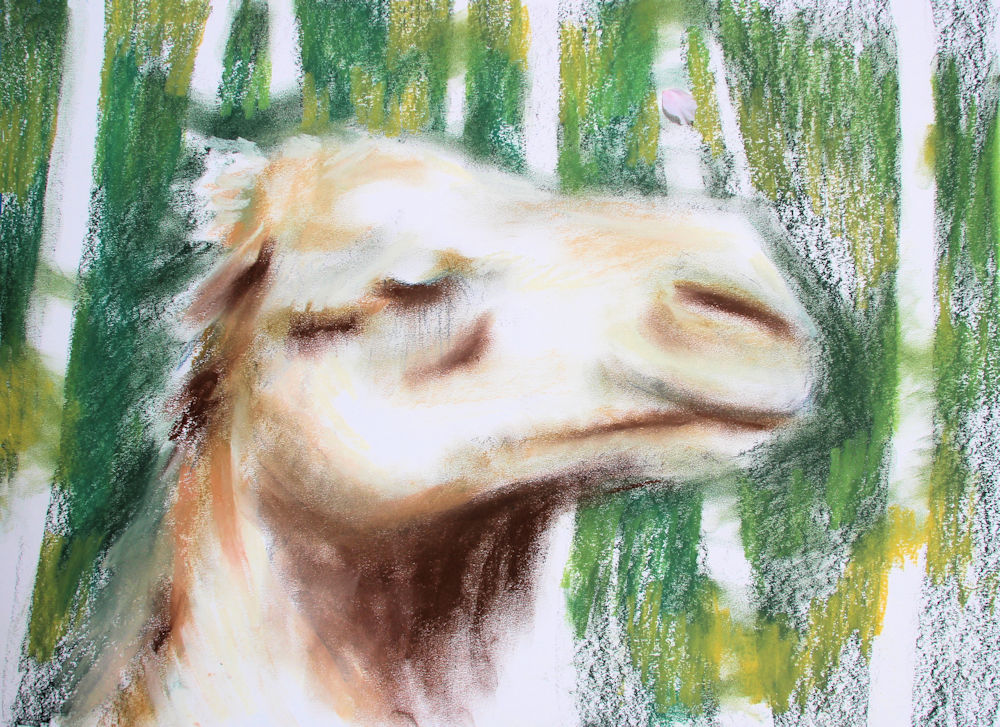 Camel at Gorge Wildlife Park, Australia, 18H x 24W inches soft pastels on paper. During the late 19th century, camels were imported to Australia from India and Afghanistan, so hundreds of thousands now roam ferrell.
Camel at Gorge Wildlife Park, Australia, 18H x 24W inches soft pastels on paper. During the late 19th century, camels were imported to Australia from India and Afghanistan, so hundreds of thousands now roam ferrell.
Left, how I start most of my work: general shapes are outlined, and composition is roughly established.
Elements of Nature
Saturday, January 1st, 2022
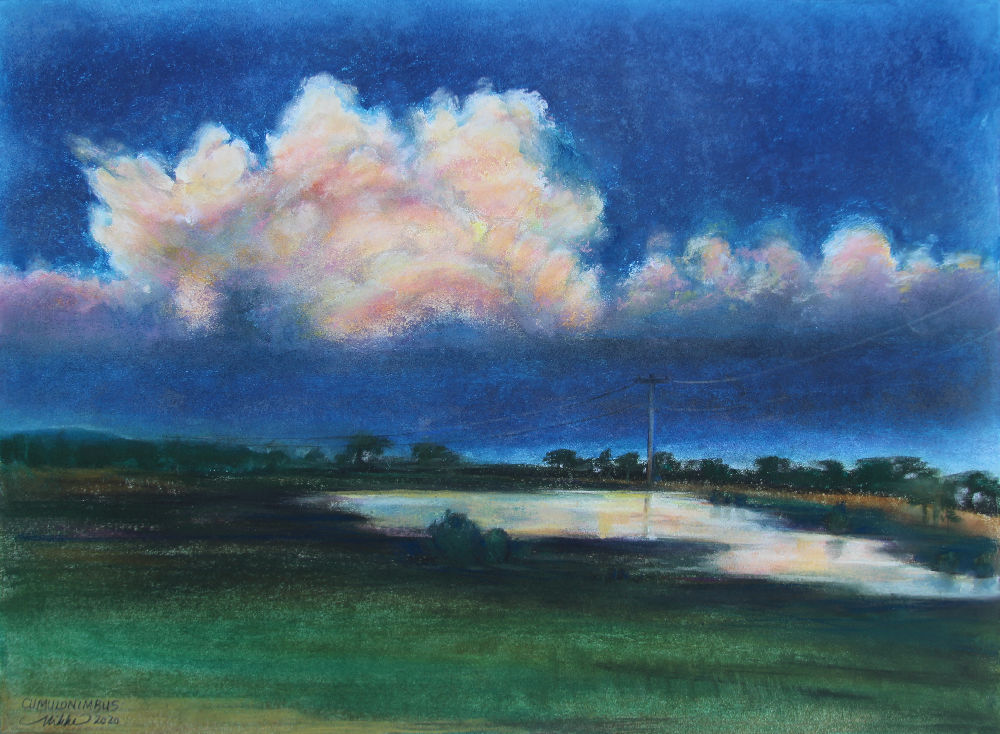 Paint Arson, 11H x 11W x 3D inches acrylics on canvas (2009), wrapped sides painted, frame unnecessary. Set on shelf or hang on wall. This and Cumulonimbus: Montana Sunset (2020) are in J. Mane Gallery’s ‘Elements of Nature’ online juried exhibition, showing through January 2022.
Paint Arson, 11H x 11W x 3D inches acrylics on canvas (2009), wrapped sides painted, frame unnecessary. Set on shelf or hang on wall. This and Cumulonimbus: Montana Sunset (2020) are in J. Mane Gallery’s ‘Elements of Nature’ online juried exhibition, showing through January 2022.
I don’t always have clear intentions behind my work, other than to make it interesting of course, because I wonder if too much explanation muddies a fresh impression of it. However, the writing connected to “Paint Arson” is worth the read. Fire is a destructive force, and positive associations with it are not immediate. For example, the pinecones of Sequoia, the largest trees on Earth, only open under the extreme conditions presented by fire. Read on…
English Ivy
Saturday, November 27th, 2021
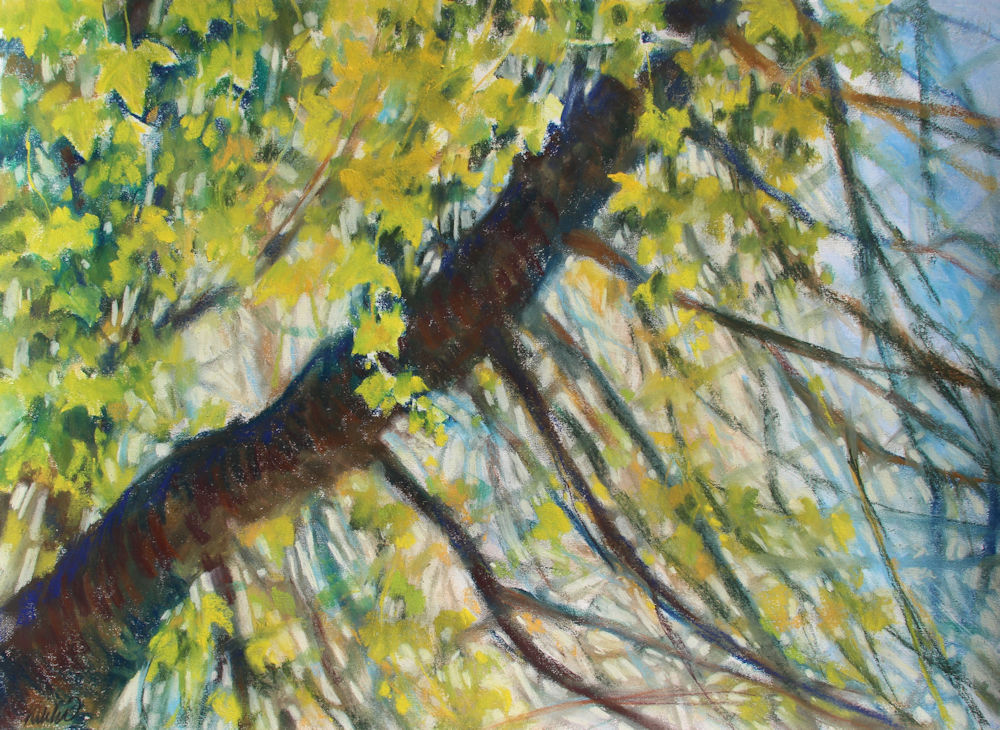
English Ivy drooped in oak tree branches, 18H x 24W inches soft pastels on paper. Framed size 27H x 33W”.
Pretty? Pretty invasive! Probably escaped from a nearby garden, English Ivy is beautiful draped in the branches of this Oak tree, but the plant, left unchecked as a ground cover, will choke out any growth of native or desirable flowers or plants. An aggressive perennial, it attaches easily with roots that exude an adhesive substance, destroying rooves and siding, climbing on branches that break under its weight. Once established, it will kill trees by blocking sunlight and thereby, photosynthesis. Because of the labor and enormous expense it takes to eradicate it from public lands and parks, people are encouraged to not plant this in your garden, even though it’s still for sale in nurseries.
York Gum trees
Saturday, May 15th, 2021
Eucalyptus loxopleba – York Gum Trees near Hyden, Western Australia – 18H x 24W inches soft pastels on paper. Apparently the York Gum is a marker of fertile soil in the Wheatbelt. Many have been cleared to make way for agriculture, resulting in weed trees and other invasive species taking over. In this iconic back-road-Australia scene, their charm welcomes us for miles.
« Previous Entries

